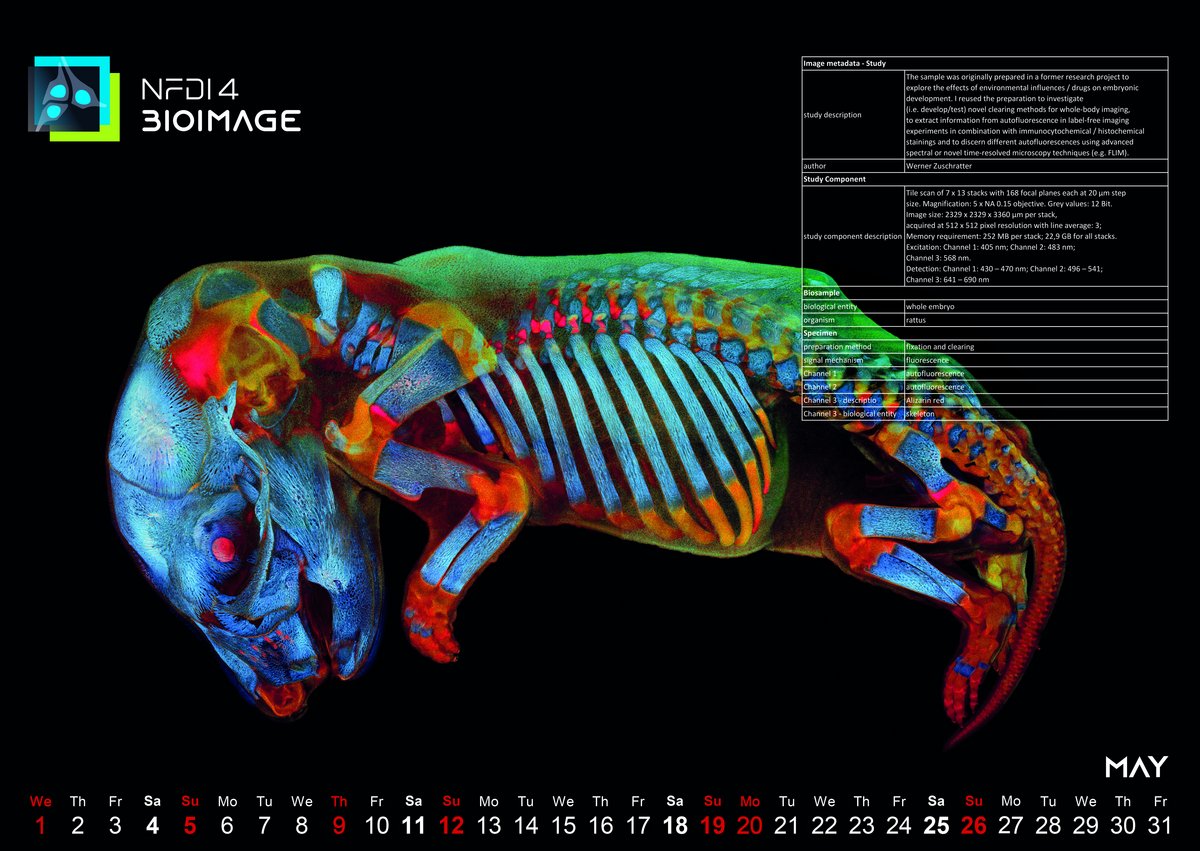
May 2024: The benefits and beauty of sharing
The benefits and beauty of sharing
The image of the month May was contributed by Werner Zuschratter of the Combinatorial NeuroImaging Core Facility at Leibniz Institute for Neurobiology, Magdeburg and co-lead of the multi-modal data linking and integration team of NFDI4BIOIMAGE. It depicts a cleared whole rat embryo acquired as a stack of thousands of individual tile images using confocal microscopy. Green and red signals highlight tissue-intrinsic auto-fluorescence combined with a bone marker in blue.
Werner had rather accidentally obtained this whole organism sample being a hidden treasure originating from a study undertaken at the Institute of Anatomy of the University Hospital Magdeburg in the 1980s. At that time, the sample was part of a series of experiments to investigate the teratogenicity of various pharmaceuticals. In contrast, the current experiments were undertaken to test various clearing methods with regard to their suitability for histochemical and immunohistochemical staining, whereby the induction of autofluorescence by the chemical procedure and the preservation of tissue-specific autofluorescence was an important issue.
This reuse of old samples underlines the importance of comprehensive documentation of metadata along the entire workflow of a scientific experiment, from sample preparation to imaging throughout image analysis including further techniques applied. In accordance with the FAIR principles, metadata is crucial information which even after 40 years ideally ensures the reproducibility of an experiment including the integration of results derived from advanced or complementary techniques.
Today, electronic lab notebooks (ELNs) facilitate this work immensely and undergo fast development. As a valuable tool for collecting and linking data and metadata ELNs assure interoperability within and between experiments and techniques.
Community archives are a further resource to share and make datasets available for reuse to the scientific community and society. While the BioImage Archive collects a wide range of bioimaging datasets, the Image Data Resource focuses on comprehensively annotated image data to serve for example as reference datasets. EMPIAR is a public archive for electron miroscopy datasets. These archives along with others openly invite scientists to contribute the valuable results of their work to increase scientific output in a sustainable way.
Join the FAIR journey.
Conni Wetzker, data steward at NFDI4BIOIMAGE and the Center for Molecular Bioengineering at TU Dresden
